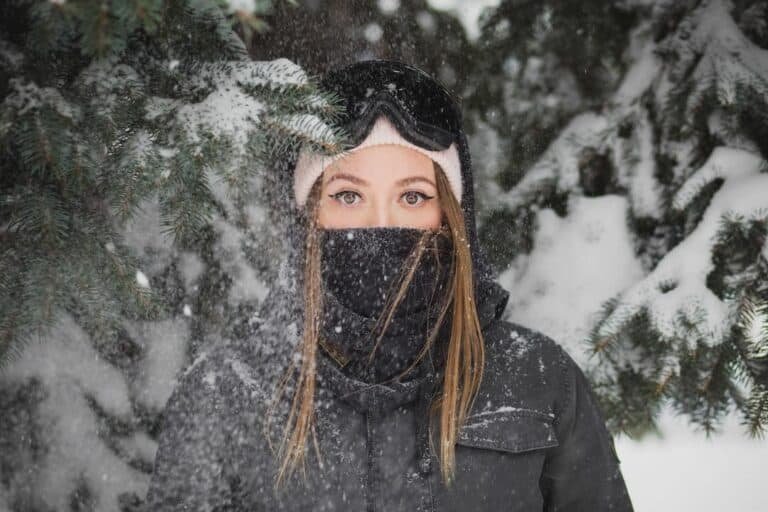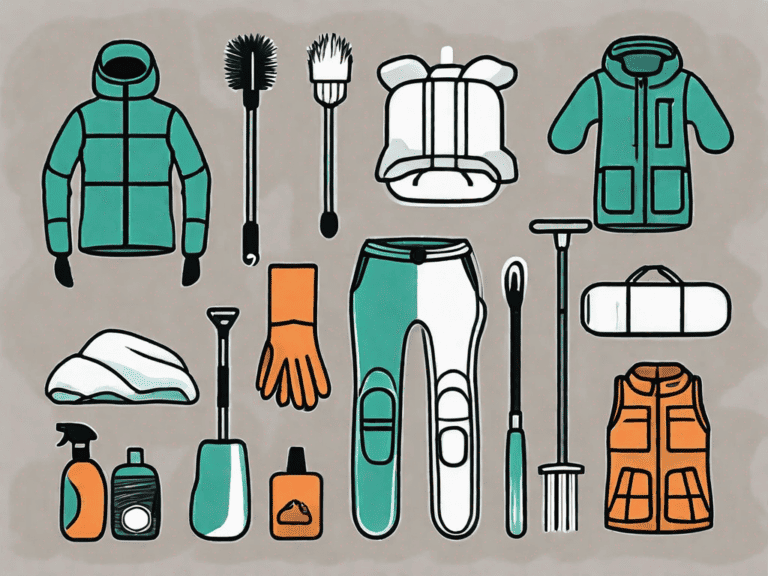How to Choose a Baselayer: Things to Consider

Choosing a baselayer is an essential step in preparing for outdoor activities, particularly in cold weather. The right baselayer can make the difference between a comfortable and enjoyable experience and a miserable one. But with so many options available, how do you choose the right one? This guide will help you navigate the process.
Key Takeaways:
- Choose between synthetic materials for durability and fast drying, or natural fibers like merino wool for warmth and odor resistance.
- Baselayers come in lightweight, midweight, and heavyweight options, each suitable for different conditions and activity levels.
- A good baselayer should fit snugly but not restrict movement. Pay attention to shoulder and elbow areas when trying on.
- Baselayers often come in men’s and women’s cuts. Choose the one that fits you best, regardless of the label.
- Baselayers regulate body temperature and wick away moisture during outdoor activities.
ItsCherieGonzales is reader-supported and includes affiliate links. When you purchase through these links, we may receive a small commission at no additional cost to you. As an Amazon Associate, I (ItsCherieGonzales) earn from qualifying purchases. Learn more
1. Understand The Role of Baselayers

Before we delve into how to choose a baselayer, it’s important to understand what a baselayer is and why it’s important. A baselayer is the first layer of clothing you wear against your skin. It’s designed to regulate your body temperature and wick away moisture from your skin.
Baselayers are typically made from either synthetic materials or natural fibers like merino wool. Each material has its own set of benefits and drawbacks, which we’ll discuss in more detail later.
The Importance of Baselayers
Baselayers play a crucial role in keeping you warm and dry during outdoor activities. They work by trapping a thin layer of air next to your skin, which your body heats up to keep you warm. At the same time, they wick away sweat from your skin to keep you dry and comfortable.
Without a good baselayer, you risk losing body heat too quickly, which can lead to hypothermia in extreme conditions. On the other hand, a baselayer that doesn’t wick away sweat effectively can leave you feeling wet and cold.
2. Choose the Right Material

When it comes to choosing a baselayer, the material is one of the most important factors to consider. The two most common materials used for baselayers are synthetic materials, like polyester, and natural fibers, like merino wool.
Each material has its own set of benefits and drawbacks. Synthetic materials are typically more durable and dry faster than natural fibers. They’re also usually more affordable. However, they can retain odors and may not provide as much warmth as natural fibers.
Synthetic Baselayers
Synthetic baselayers are made from engineered materials like polyester or a combination of polyester with other synthetic fibers. Designed for quick-drying and efficient moisture-wicking, these baselayers are typically suited for situations where sweat management is crucial.
Key Features
- Quick Drying: Synthetic fibers wick moisture away from the skin and evaporate it rapidly.
- Durable: These baselayers often last longer and are more resistant to abrasion.
- Cost-effective: Generally more affordable than natural fiber options like merino wool.
Ideal Activities for Synthetic Baselayers
- Running: Excellent moisture-wicking properties keep you dry.
- Cycling: Quick-drying benefits are especially useful for long rides.
- Gym Workouts: Efficient in dealing with high sweat levels.
Limitations
- Odor Retention: Synthetic materials are prone to retaining body odors.
- Less Warmth: Not as insulating as natural fibers, making them less effective in colder conditions.
Multi-Day Trip Considerations
Due to odor retention, synthetic baselayers might not be ideal for extended trips where washing is not possible. Packing multiple sets could be a workaround, but it increases your luggage.
Check out Thermajohn’s Base Layer Set Top and Bottom
Merino Wool Baselayers
Natural fiber baselayers are predominantly made from merino wool, a high-quality, natural material renowned for its softness and insulating properties. This type of baselayer is especially effective in providing a comfortable, warm layer against your skin.
Key Features
- Soft and Warm: Merino wool is naturally insulating, making you feel warm in cold conditions.
- Odor-Resistant: Merino wool resists microbial growth, thus reducing odor.
- Breathable: Allows for good air circulation, enhancing comfort.
Ideal Activities for Merino Wool Baselayers
- Hiking: Provides sustained warmth and odor resistance for long treks.
- Skiing: Insulating properties are ideal for cold environments.
- Camping: Good for extended use without washing.
Limitations
- Cost: Generally more expensive than synthetic baselayers.
- Drying Time: Takes longer to dry when wet, which can be a disadvantage in sweaty or rainy conditions.
Multi-Day Trip Considerations
Natural fiber baselayers are an excellent choice for longer trips because they don’t retain odors, allowing for extended wear without the need for frequent washing.
Check out Smartwool Standard Merino 250 Base Layer Top and Bottom.
Bamboo Baselayer
Bamboo baselayers are made from bamboo fiber, a sustainable and eco-friendly material. These baselayers combine some of the best qualities of both synthetic and natural fibers. They are soft, breathable, and have natural antibacterial properties.
Key Features
- Eco-Friendly: Bamboo is a fast-growing, renewable resource.
- Soft and Comfortable: Comparable to the softness of merino wool.
- Antibacterial: Natural antibacterial properties reduce odor.
- Moisture-Wicking: Effective at moving sweat away from the skin.
Ideal Activities for Bamboo Baselayers
- Yoga and Pilates: Soft and stretchy, ideal for flexible movements.
- Casual Hiking: Offers a good blend of breathability and comfort.
- Everyday Wear: Suitable for daily use due to its comfort and odor resistance.
Limitations
- Durability: Not as durable as synthetic materials.
- Cost: Generally more expensive than synthetic but less costly than merino wool.
Multi-Day Trip Considerations
The natural antibacterial properties make bamboo baselayers a good choice for multi-day trips where you have limited access to laundry facilities.
When Not to Use Bamboo Baselayers
- Extreme Cold: Not as insulating as merino wool or heavyweight synthetic fibers.
- High-Intensity Activities: While they wick moisture, they don’t dry as quickly as fully synthetic materials.
Check out Bambool Thermics Base Layer Top and Bottom
3. Choose the Right Weight

Another important factor to consider when choosing a baselayer is the weight. The weight of a baselayer refers to its thickness and warmth. Baselayers come in three weights: light, mid, and heavy.
Lightweight baselayers are designed for mild to cool conditions. They’re thin and breathable, making them a good choice for high-intensity activities. Midweight baselayers are designed for cool to cold conditions. They’re thicker and warmer than lightweight baselayers, making them a good choice for moderate-intensity activities. Heavyweight baselayers are designed for cold to extreme cold conditions. They’re the thickest and warmest baselayers, making them a good choice for low-intensity activities in cold weather.
Lightweight Baselayers
Lightweight baselayers are the most breathable and least insulating among the baselayer categories. They are specifically engineered to rapidly wick away sweat from your skin, ensuring quick evaporation. This makes them highly effective for high-energy activities such as running, cycling, or any endeavor where you’re likely to sweat a lot.
Composition and Fabric
These baselayers are generally made from materials that excel in moisture management. Synthetic fabrics like polyester are commonly used because they are excellent at wicking moisture and drying out quickly. Some lightweight baselayers also incorporate mesh panels for additional ventilation.
Ideal Activities for Lightweight Baselayers
- Running: Their moisture-wicking capabilities keep you dry.
- Cycling: The quick-drying fabric is beneficial when you’re pedaling hard.
- Gym Workouts: Excellent for indoor activities where you need minimal insulation but maximum sweat control.
Temperature Range
Lightweight baselayers are best suited for mild to cool temperatures. They are not designed to provide significant insulation against the cold, but they excel at moisture management.
Limitations
- Insulation: Lightweight baselayers won’t offer much in terms of insulation. If you’re venturing into colder climates, they may not be sufficient as your only layer close to the skin.
- Odor Control: Many synthetic materials are not as naturally odor-resistant as natural fibers like merino wool.
When Not to Use Lightweight Baselayers
- Low-Intensity Activities in Cold Weather: They won’t provide enough insulation in colder temperatures if you’re not engaging in high-energy activities to generate body heat.
- Multi-day trips without laundry access: Due to their tendency to retain odor, they may not be the best choice for long-term wear.
Midweight Baselayers
Midweight baselayers strike a balance between insulation and breathability. They are thicker than lightweight baselayers but less bulky than heavyweight ones. This makes them versatile and suitable for a broader range of temperatures and activities.
Composition and Fabric
These baselayers often come in a blend of synthetic and natural fibers, like merino wool mixed with polyester. This combines the moisture-wicking properties of synthetics with the warmth and odor resistance of natural fibers.
Ideal Activities for Midweight Baselayers
- Hiking: Provides enough warmth without causing overheating.
- Skiing: Good for moderate-intensity downhills and chairlift rides back to the top.
- Camping: Versatile for varying daytime and nighttime temperatures.
Temperature Range
Midweight baselayers are generally ideal for cool to cold conditions. They can serve as a good single layer in mild cold and work well as a part of a layering system in freezing conditions.
Limitations
- Moisture Management: While they do wick sweat, they’re not as quick-drying as lightweight options.
- Bulk: They will add some bulk, which could be a concern if you have very tight-fitting outer layers.
When Not to Use Midweight Baselayers
- High-Intensity Activities in Warm Conditions: You might overheat and sweat excessively.
- Situations Requiring Rapid Drying: If quick-drying is a priority, like in water sports, they may not be the best fit.
Heavyweight Baselayers
Heavyweight baselayers are the most insulated of the baselayer categories, designed for maximum heat retention. They are best suited for extreme cold or less physically demanding activities where staying warm is the primary concern.
Material Composition
Heavyweight baselayers are commonly made from a blend of high-quality natural fibers like merino wool and synthetics such as polyester for added durability. The primary aim is to trap as much heat as possible.
Ideal Activities for Heavyweight Baselayers
- Ice Fishing: Stationary for long periods in extreme cold.
- Winter Camping: Excellent for nighttime use when temperatures plummet.
- Snowshoeing: Effective for slower-paced activities in harsh conditions.
Temperature Range
Ideal for temperatures that are consistently below freezing. These baselayers are your best bet when you’re dealing with extremely cold environments.
Limitations
- Breathability: Limited ability to wick moisture away, making them less suitable for high-intensity activities.
- Bulkiness: Their thick material may restrict some movement and make layering with tight-fitting outerwear a challenge.
When Not to Use Heavyweight Baselayers
- Warmer Conditions: You’re likely to overheat unless it’s truly cold.
- High-intensity Activities: Poor moisture wicking and breathability can become an issue.
4. Choose the Right Fit

The fit of a baselayer is a critical consideration for optimal comfort and performance. A well-fitting baselayer should be snug but not constricting, allowing it to wick moisture away from your skin while trapping a thin layer of air for insulation. This balance is essential for regulating your body temperature during different levels of physical activity.
When you’re trying on a baselayer, focus on freedom of movement. While the garment should be close-fitting, it should not restrict your natural range of motion. This is particularly crucial around your shoulders and elbows, which are typically the first areas to feel constrained in a too-small baselayer. If these areas feel tight or uncomfortable, you’ll likely experience hindered mobility during activities, which can decrease your performance and overall enjoyment.
Choosing the right fit is not just about size; it’s also about the cut and design of the garment. Features such as flat seams, gussets, and four-way stretch can all contribute to a better fit, allowing for unhindered movement. These design elements can make a significant difference in how the baselayer performs during physical activities, from low-intensity hikes to high-intensity runs.
Men’s vs. Women’s Baselayers
Most baselayers come in both men’s and women’s versions. The main difference between the two is the cut. Women’s baselayers are typically cut narrower in the waist and wider in the hips compared to men’s baselayers.
However, the most important thing is to choose a baselayer that fits you well, regardless of whether it’s labeled as men’s or women’s. If a men’s baselayer fits you better than a women’s baselayer, go for it, and vice versa.
5. Budget Considerations

Choosing a baselayer that fits your budget is essential, but that doesn’t mean you should sacrifice quality. Let’s break down how to navigate budget constraints while still getting a product that serves you well.
Price Range
Baselayers can range from affordable to expensive, with synthetic materials often being the least costly. Merino wool and specialized blends are on the higher end of the spectrum. Knowing your price range can help you narrow down your options effectively.
Cost vs. Durability
It’s tempting to go for the cheapest option, but this could lead to frequent replacements, ultimately costing you more in the long run. A more expensive baselayer may have a longer lifespan, effectively making it a better investment.
Seasonal Needs
If you’re someone who engages in seasonal outdoor activities, you might need different types of baselayers for varying weather conditions. In this case, you may consider allocating your budget to purchase multiple types, such as one lightweight for summer and a heavyweight for winter.
Frequency of Use
Consider how often you’ll be using the baselayer. If it’s for occasional use, you might be okay with a mid-range option. However, if you’re planning on frequent, intensive activities, investing in a high-quality, durable baselayer may be more economical over time.
Conclusion
Choosing a baselayer is an important decision that can greatly affect your comfort and performance during outdoor activities. By considering the material, weight, and fit of a baselayer, you can find the perfect baselayer for your needs.
Remember, the best baselayer for you depends on your personal preferences and the specific conditions you’ll be facing. Don’t be afraid to try out different options and see what works best for you.






